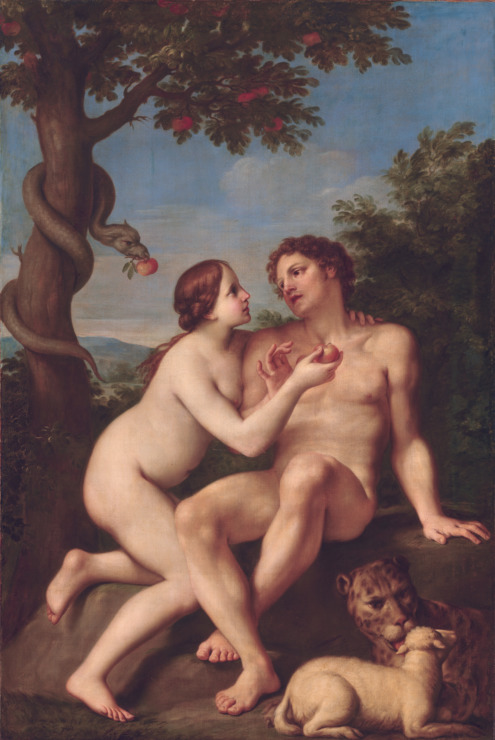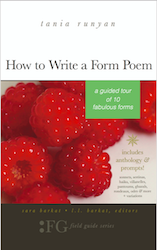Sharing Eve’s Apple
O blush not so! O blush not so!
Or I shall think you knowing;
And if you smile the blushing while,
Then maidenheads are going.
There’s a blush for want, and a blush for shan’t,
And a blush for having done it;
There’s a blush for thought, and a blush for nought,
And a blush for just begun it.
O sigh not so! O sigh not so!
For it sounds of Eve’s sweet pippin;
By these loosen’d lips you have tasted the pips
And fought in an amorous nipping.
Will you play once more at nice-cut-core,
For it only will last our youth out,
And we have the prime of the kissing time,
We have not one sweet tooth out.
There’s a sigh for aye, and a sigh for nay,
And a sigh for “I can’t bear it!”
O what can be done, shall we stay or run?
O cut the sweet apple and share it!
-John Keats
Enjoy Artistic Representations of “Sharing Eve’s Apple” by John Keats

Henri Rousseau – Eve in the Garden of Eden, ca. 1906-1910.

Marcantonio Franceschini- Adam and Eve, ca. 1680.
Listen to Readings of “Sharing Eve’s Apple”
Listen to this Musical Interpretation of “Sharing Eve’s Apple” by John Keats
John Keats Biography
Keats was born in London on Oct. 31, 1795; a few weeks later he was baptized at St. Botolph Without Bishopsgate Church, near where his parents lived and father worked as the manager of a stable owned by his father-in-law. Keats was the eldest of four children, with George, Tom, and Fanny following him. The family was well off enough that the boys were sent to Clark’s Academy in Edmonton at what is now the north London borough of Enfield for their education; it was riding his horse home from a visit to the school that Keats’ father fell and died the next day. His mother remarried (rather quickly, in fact), fought with the rest of the family, and died fairly young from consumption or tuberculosis, which was all too common at the time and would eventually claim the life of Keats’ youngest brother, Tom, as well as Keats himself.
He was apprenticed to a local doctor, but the relationship didn’t seem to work too well. He ended up working at St. Guy’s Hospital in the Southwark district of London, continuing his medical training and writing poetry (the site of the original St. Guy’s in now occupied by London’s tallest office building, known locally as “The Shard”).
While Keats had numerous city connections (Anita Miller also has a “Keats in the City” walk), it is with Hampstead that he is most closely associated. Fellow poets lived there, as did the editor who first published his poetry. Artists whom Keats associated with lived there. Keats himself would move there with his brothers. Keats and his friends would wander Hampstead Heath, talking and arguing poetry and the issues of the day. After moving into Wentworth House in Hampstead, Keats wrote five of six famous odes, including “Ode to a Nightingale.” And it would be at Wentworth House in Hampstead that Keats would realize that he was dying from the same disease that took his mother and younger brother.
Enjoyed Sharing Eve’s Apple by John Keats and want to know more about Keats’ life? Try A Month With Keats: A Walk Into His Life
That’s it for Sharing Eve’s Apple!
BUY ‘HOW TO WRITE A FORM POEM’ NOW!
